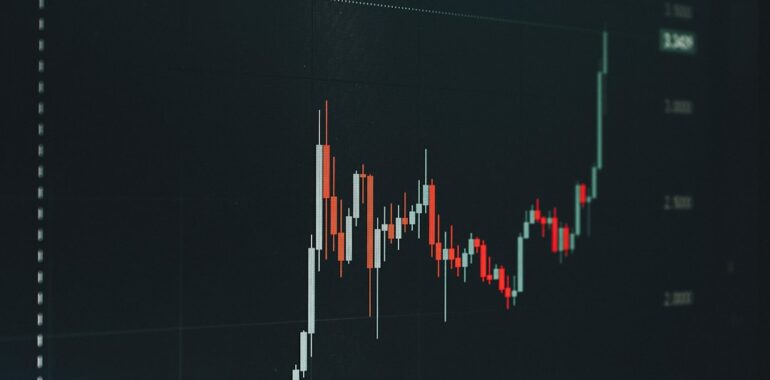Understanding a Silver Short Squeeze: Definition and Market Impact

Image Source: Unsplash
Discover what a silver short squeeze is, how it affects the market, and its implications for traders and investors in this comprehensive guide.
What Is a Silver Short Squeeze?
A stock short squeeze occurs when the price of a commodity or stock rises rapidly, compelling short sellers to cover their positions by buying back the asset. This surge in buying activity further drives up the price, creating a cyclical effect that can lead to significant market volatility.
In the context of silver, a silver short squeeze involves a substantial and swift increase in the price of silver. This rise forces investors who have bet against silver (short sellers) to buy silver to mitigate their losses. Consequently, this buying pressure can push silver prices even higher, exacerbating the squeeze.
How Does a Short Squeeze Work?
The Mechanics of Short Selling
To understand a short squeeze, it’s essential to grasp the basics of short selling. When investors short an asset, they borrow shares or contracts and sell them with the expectation that the asset’s price will decline. If the price does drop, they can buy back the asset at a lower price, return it to the lender, and pocket the difference.
However, if the asset’s price increases instead of decreasing, short sellers face potential losses. These losses can become theoretically unlimited since there’s no cap on how high a stock’s price can go.
Triggering a Short Squeeze
A short squeeze is typically triggered by a sudden and unexpected increase in the asset’s price. Several factors can contribute to this surge:
- Positive Market News: Favorable reports or developments can boost investor confidence, driving up demand.
- Increased Demand: Higher demand for the asset, whether due to economic factors or speculative trading, can push prices upward.
- Limited Supply: If the asset’s supply is constrained, even a small increase in demand can lead to significant price jumps.
When these factors cause the price to spike, short sellers may rush to buy back the asset to cover their positions, further driving up the price and intensifying the squeeze.
Historical Examples of Short Squeezes
GameStop (2021)
One of the most notable short squeezes in recent history involved GameStop. In early 2021, a group of retail investors from the Reddit forum WallStreetBets coordinated to buy GameStop shares en masse. This surge in buying drove the stock price from around $20 to an astonishing peak of $483 within weeks. Hedge funds that had heavily shorted GameStop faced enormous losses, highlighting the powerful impact of a short squeeze.
The Hunt Brothers and Silver (1979-1980)
The Hunt Brothers orchestrated one of the most dramatic short squeezes in the silver market. By aggressively buying silver, they drove the price from $6 per ounce in early 1979 to nearly $50 per ounce by January 1980. Their actions squeezed short sellers out of the market, but eventually led to a market crash known as “Silver Thursday” when the price plummeted, resulting in massive losses for the Hunts.
Implications of a Silver Short Squeeze
For Investors
A silver short squeeze can offer significant opportunities for investors holding long positions in silver. As prices rise, the value of their holdings increases, potentially yielding substantial profits. However, the volatility associated with short squeezes also means heightened risk, as prices can swing dramatically.
For the Market
Short squeezes can introduce considerable volatility into the market. While they can temporarily drive asset prices to unsustainable levels, they also bring attention to the dynamics between short sellers and long investors. Regulatory bodies may scrutinize large-scale squeezes to ensure market integrity and prevent manipulation.
For Short Sellers
Short sellers face increased risks during a short squeeze. As prices rise, their losses can mount rapidly, sometimes exceeding their initial investments. This pressure can force them to cover their positions at unfavorable prices, exacerbating the squeeze and leading to broader market disruptions.
Can a Silver Short Squeeze Occur Today?
While short squeezes in the silver market are less common compared to stocks, they are not impossible. Factors such as disruptions in the silver supply chain, geopolitical tensions, or a surge in demand for silver as a safe-haven asset could potentially trigger a short squeeze.
However, the steady and incremental price movements typical of silver make a dramatic short squeeze challenging to execute. Unlike stocks, silver lacks quarterly earnings reports or business developments that can cause rapid price shifts, making true short squeezes a rare occurrence.
Conclusion
Understanding a stock short squeeze, particularly in the context of silver, is crucial for investors navigating the complexities of the financial markets. While silver short squeezes are rare, their potential impact on market dynamics and investor portfolios cannot be understated. By staying informed and vigilant, traders and investors can better anticipate and respond to the opportunities and risks presented by short squeezes.
For more insights and updates on financial phenomena like short squeezes, visit Superstonk.




